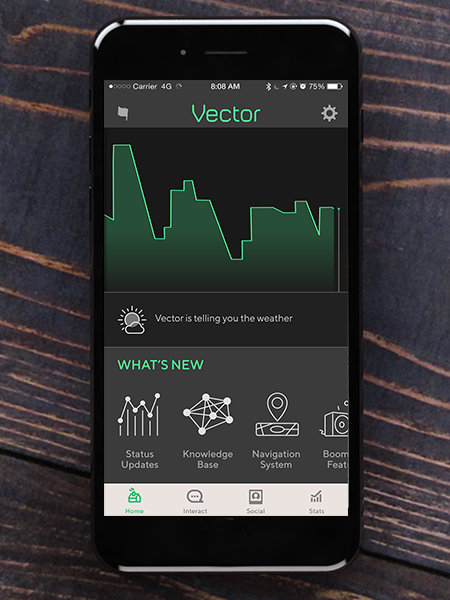Anki's Vector
Role: Senior User Experience Designer
Time: 18 Months (2018-2019)
Vector is a consumer robot that has a large array of capabilities. He can remember people, take pictures, receive voice commands, detect edges, and more. Vector can be connected with an Amazon Alexa account and has an SDK available for people that wish to create their own scripts and features.
Table of Contents
•INTRO
Intro
As a User Experience Designer, I spearheaded the creation and revisions of the Vector App. The app launched in October 2018 on both iOS and Android. I also worked on robot-centric features, such as face recognition. I was the Product Owner and Designer for Onboarding, which married both the app and robot.
My Responsibilities
•Creation and revisions of UX flows, wireframes, prototypes, and documentation for the Vector Companion app
•Creating a holistic Onboarding experience for Vector
•Collaborate with other designers on robot-centric features
•Understand the limitations of the hardware and work to resolve that through design solutions
•Polish the implemented UI in XCode
•Work with the User Research team to create hypotheses, test, and work to resolve issues through user testing


A mock up of the app (UI by Seth Forester) and the actual Robot
No Robot Is an Island
When building and designing a robot, there are a lot of roles at play. Design has to be aware of all parameters and work with all teams. Vector was a wonderful opportunity to work cross discipline with many talented people.
Product Goals
•Create a table top mobile robot that went beyond being a “virtual assistant on wheels”. Vector has a personality.
•He is an “always on” robot that the user is excited to come home too.
•Decouple Vector from the app. The app would be there, but it wouldn’t be needed for interacting with the robot.
Hardware Parameters
•On average, Vector can spend about 30 to 40 minutes off of the charger.
•Vector needs a 2.4 ghz wifi signal to connect to the cloud.
•He can connect to the app over blue-tooth.
Audience
The audience for Vector was intended to be tech enthusiastic adults. As we brought users in for testing, it became apparent that the words “tech enthusiastic” has many different levels. There were many people that came in, worked in tech, but had never interacted with an Alexa or any IoT device.
Design Challenges
Our product didn’t just exist on a screen. It existed in the physical world as well. This
presented a number of challenges, especially for Onboarding, when the user would first interact with their robot.
•How do we tell the user how to set him up?
•How do we inform the user when an interaction fails?
•How do we keep them confident enough to keep engaging with the product?